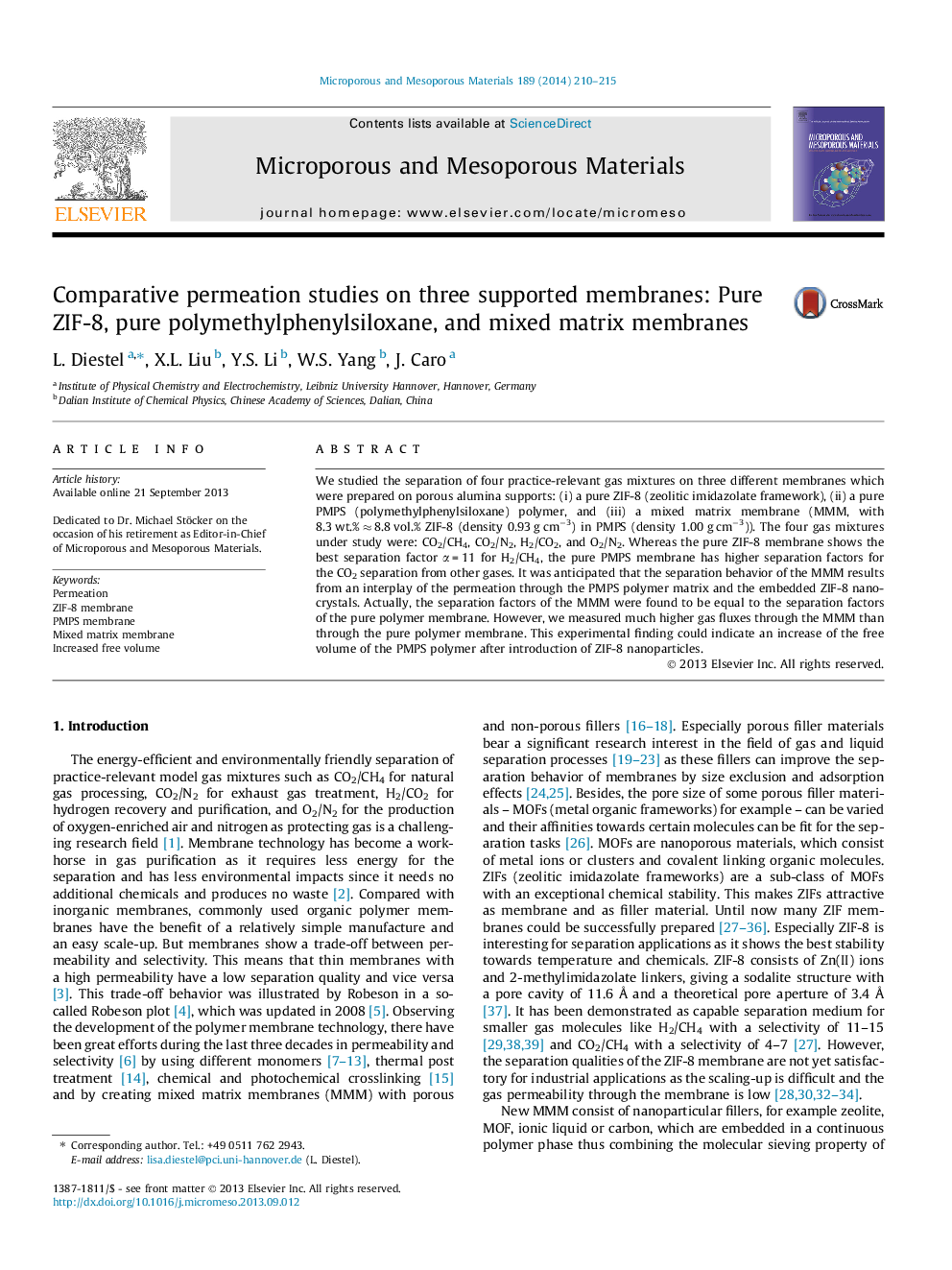| Article ID | Journal | Published Year | Pages | File Type |
|---|---|---|---|---|
| 73171 | Microporous and Mesoporous Materials | 2014 | 6 Pages |
•Three membranes have been prepared: ZIF-8, PMPS and mixed matrix (MMM).•ZIF-8 membrane separates H2 from other gases following a molecular sieve mechanism.•PMPS separates CO2 from other gases following an absorption mechanism.•MMM shows the same selectivity like PMPS but higher fluxes.•Explanation: An increased free volume of PMPS after introduction of nanoparticles.
We studied the separation of four practice-relevant gas mixtures on three different membranes which were prepared on porous alumina supports: (i) a pure ZIF-8 (zeolitic imidazolate framework), (ii) a pure PMPS (polymethylphenylsiloxane) polymer, and (iii) a mixed matrix membrane (MMM, with 8.3 wt.% ≈ 8.8 vol.% ZIF-8 (density 0.93 g cm−3) in PMPS (density 1.00 g cm−3)). The four gas mixtures under study were: CO2/CH4, CO2/N2, H2/CO2, and O2/N2. Whereas the pure ZIF-8 membrane shows the best separation factor α = 11 for H2/CH4, the pure PMPS membrane has higher separation factors for the CO2 separation from other gases. It was anticipated that the separation behavior of the MMM results from an interplay of the permeation through the PMPS polymer matrix and the embedded ZIF-8 nanocrystals. Actually, the separation factors of the MMM were found to be equal to the separation factors of the pure polymer membrane. However, we measured much higher gas fluxes through the MMM than through the pure polymer membrane. This experimental finding could indicate an increase of the free volume of the PMPS polymer after introduction of ZIF-8 nanoparticles.
Graphical abstractFigure optionsDownload full-size imageDownload as PowerPoint slide
